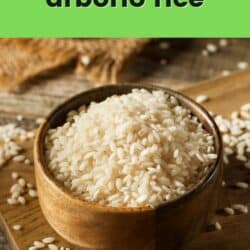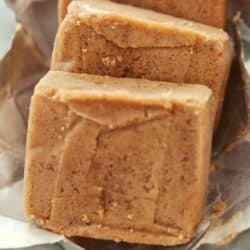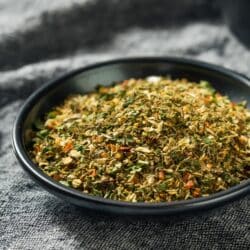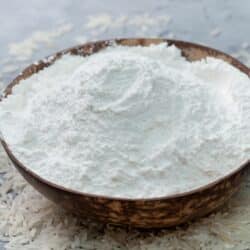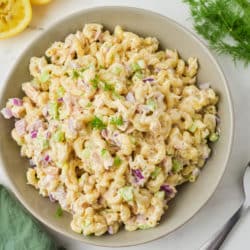8 Fantastic Arborio Rice Substitutes for Risotto
Arborio rice is a type of starchy white rice most often used in risotto. This specialty item is a key ingredient in several Italian dishes including risotto. Learn several fantastic substitutes for Arborio rice if you don’t have it in your kitchen including sushi rice, white Basmati rice, short grain brown rice, pearled barley, and more.
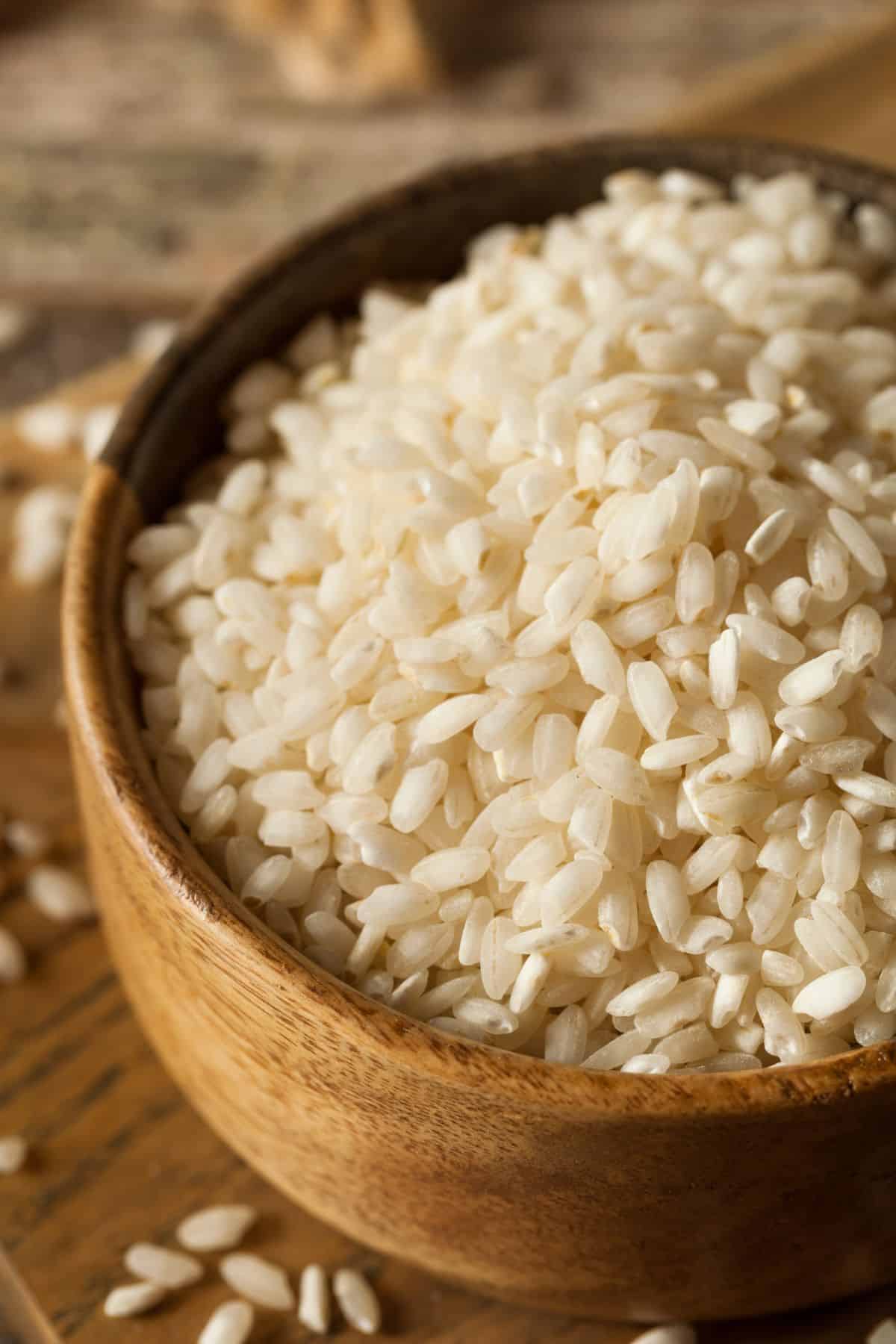
Overview of Arborio Rice
Arborio rice is short grain rice that originates from Italy.
It is known for its distinctive, creamy texture and its ability to absorb flavors. It is often used in dishes such as risotto and paella.
It has a high starch content which makes it perfect for traditional risotto with a creamy consistency. In Italy, carnaroli rice (another short-grain rice) is sometimes used instead of arborio rice for risotto recipes, but it’s hard to find in other countries.
When cooked, Arborio rice absorbs liquid well, which makes it an excellent choice for dishes that are meant to be creamy or soupy. It is also relatively easy to cook, making it a good option for those who are new to cooking rice.
Arborio Rice Substitutes
1. Sushi rice
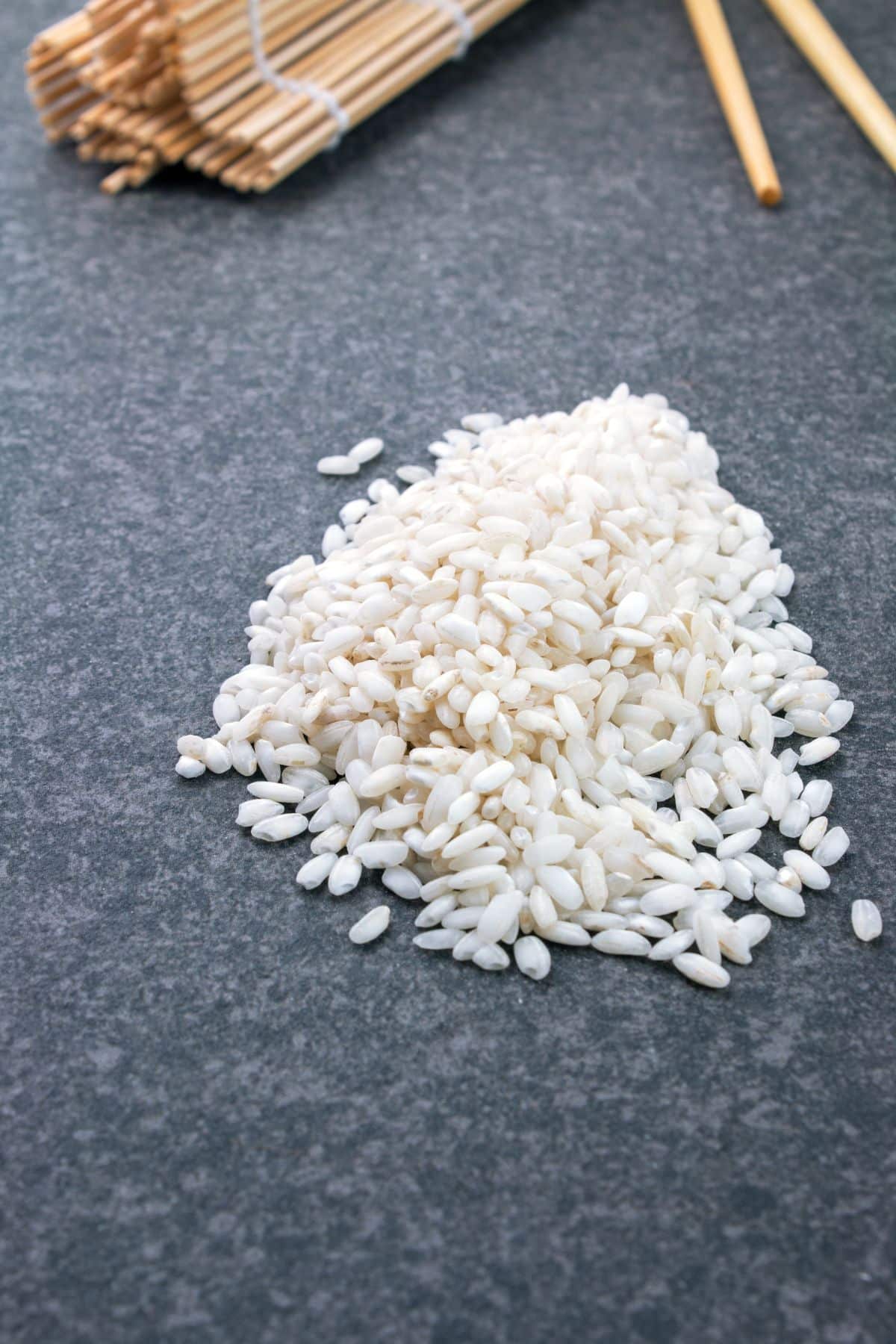
Sushi rice is a short-grain variety of rice that is often used in Japanese cuisine. It has a stickier texture than other types of rice, which makes it ideal for sushi rolls.
It is typically white or off-white in color and has a sticky texture. The grains are also relatively small and round, which helps them to stick together. It’s an excellent alternative to Italian arborio rice.
To substitute one cup of uncooked arborio rice, use one cup of uncooked sushi rice.
2. White basmati rice
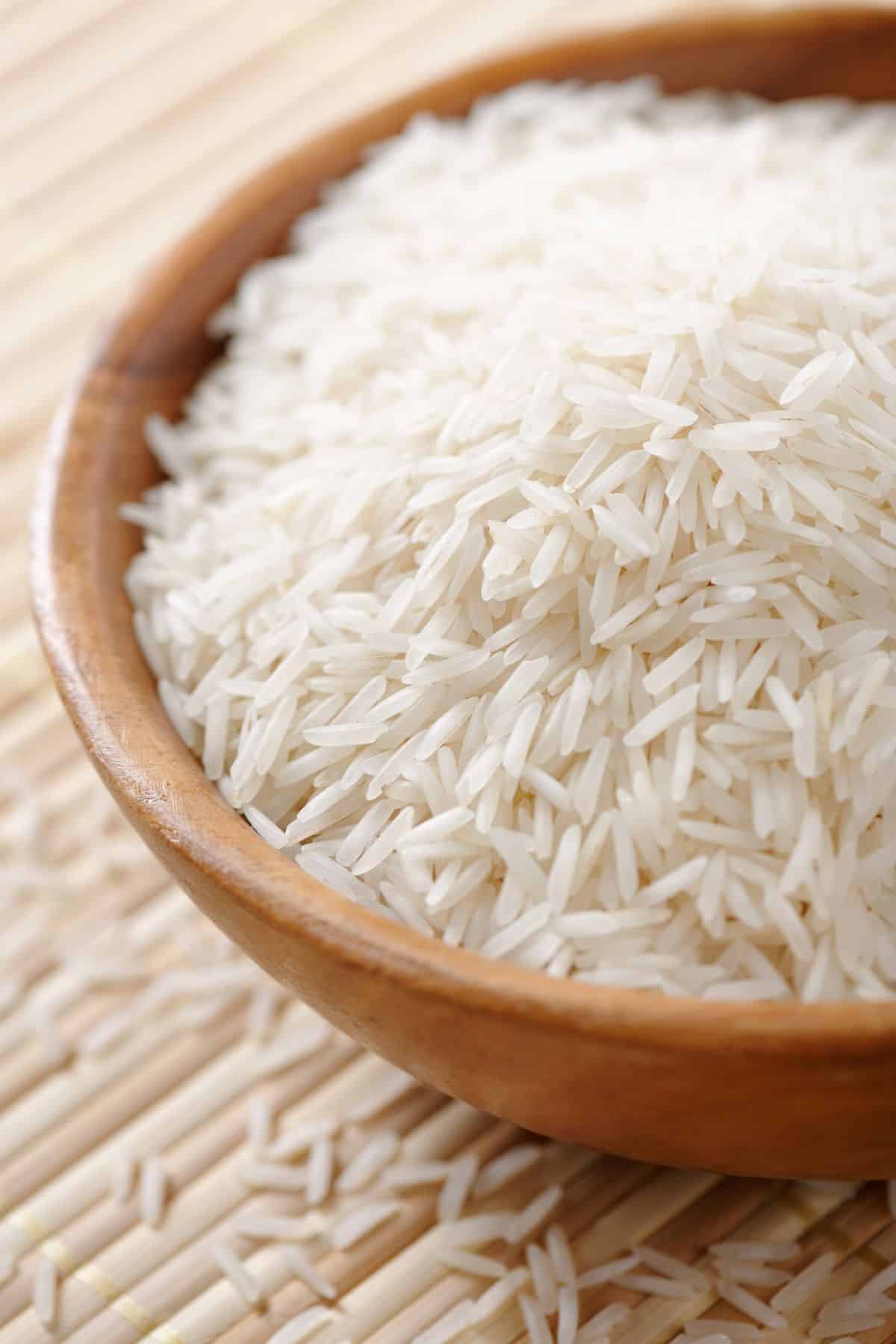
White basmati rice is a long grain, aromatic rice that is popular in Indian and Pakistani cuisine.
The grains of basmati rice are longer and thinner than other types of rice, and they have a light, fluffy texture. Basmati rice is traditionally served with curries, stews, and sauces, but it can also be used in pilafs, salads, and desserts.
See my related article, Is Basmati Rice Healthy?
I like using basmati rice in my recipe for Instant Pot Greek Lemon Rice Soup.
To substitute one cup of uncooked arborio rice, use one cup of uncooked white basmati rice.
3. Short Grain Brown Rice
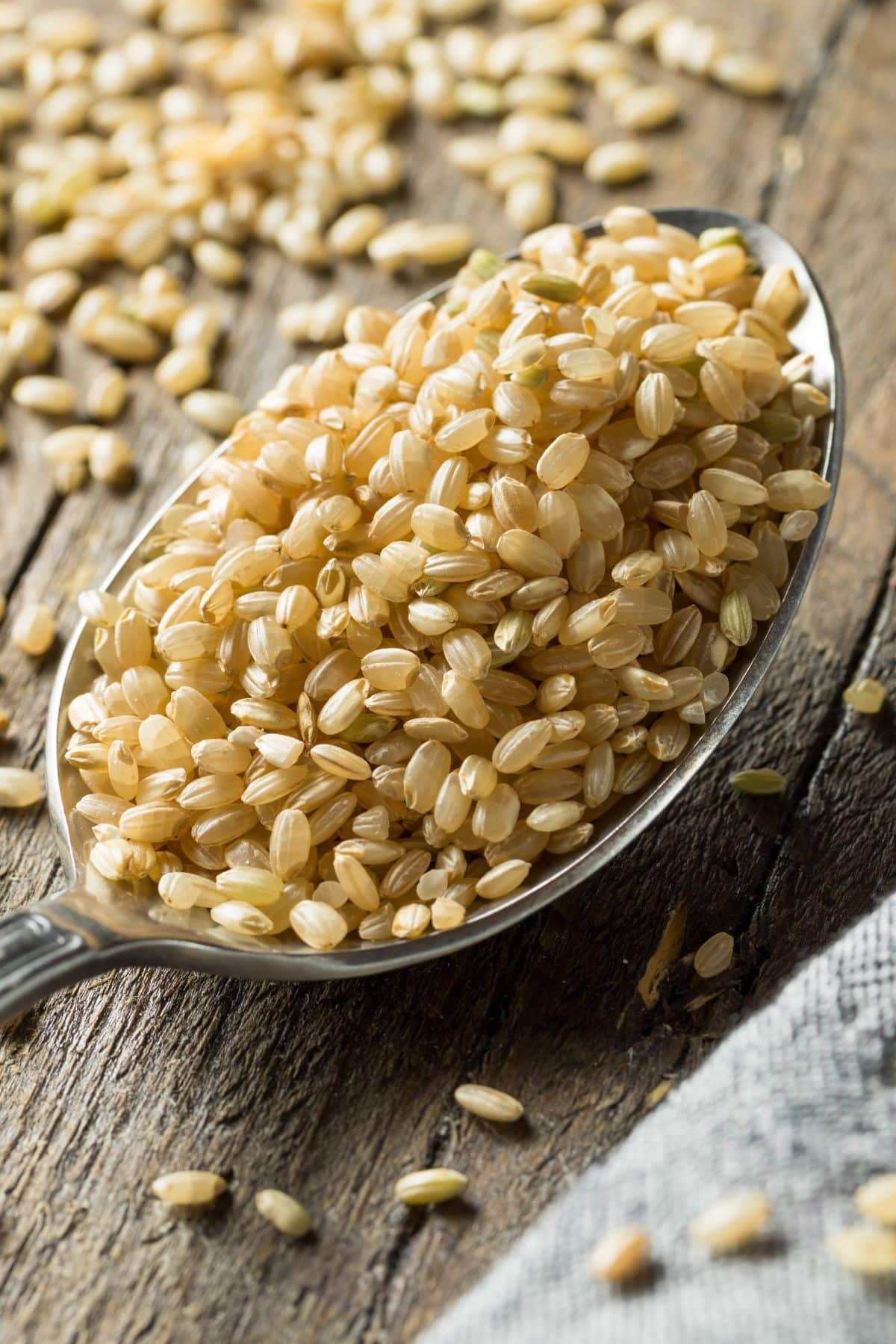
Brown rice is a type of whole grain rice that retains its nutrient-rich outer layer, called the bran. This layer contains fiber, vitamins, and minerals.
Short grain brown rice is a variety of brown rice that has grains that are shorter and plumper than long grain brown rice. The short, plump grains give short grain brown rice a higher starch content, which makes it moister and stickier than other types of rice.
It can be used in risotto, rice pudding, and other dishes where a sticky texture is desired.
To substitute one cup of uncooked arborio rice, use 1/2 cup of uncooked short grain brown rice.
4. Jasmine rice
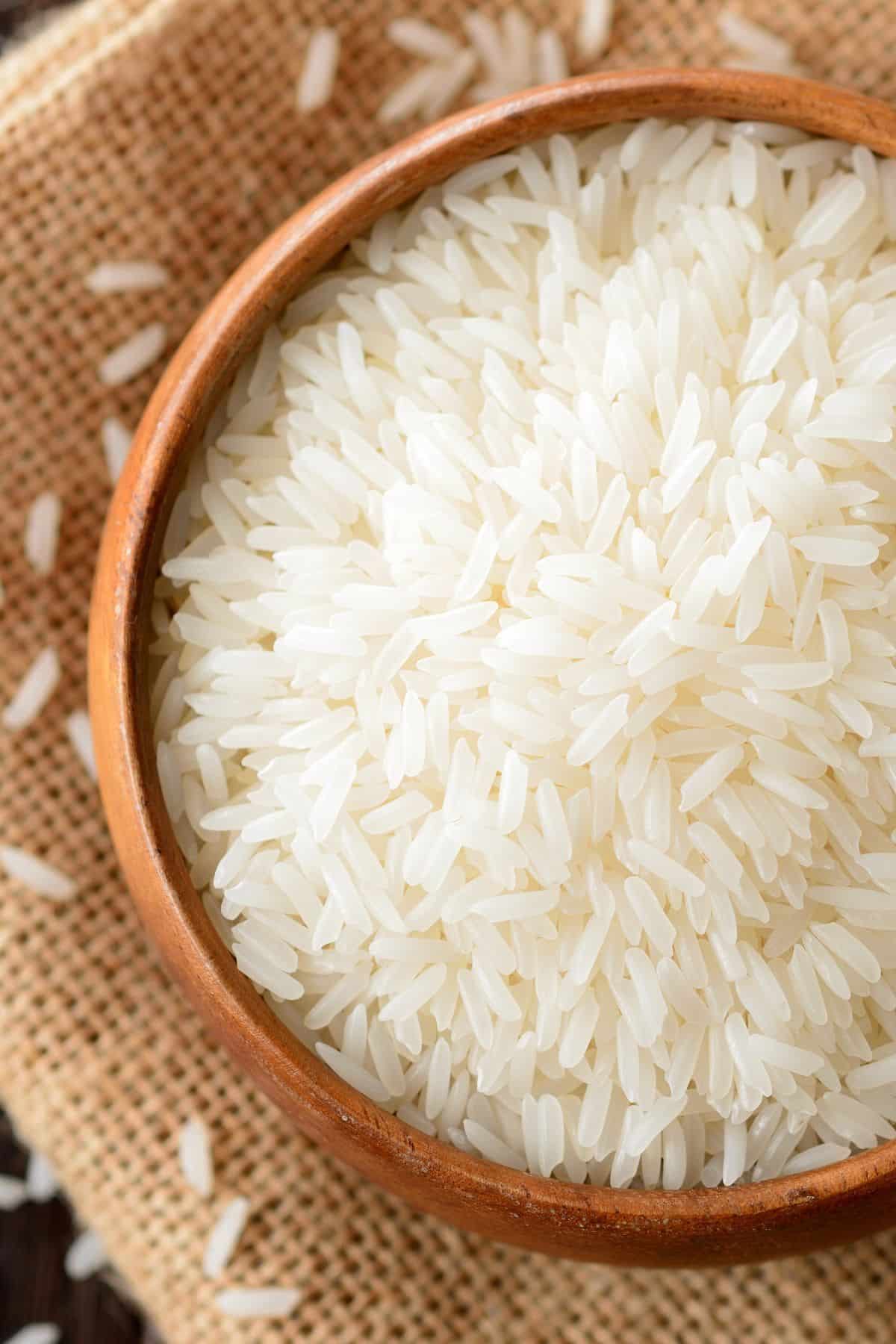
Jasmine rice is a type of long grain rice, but it has a shorter, plumper grain. It’s also stickier than other types of rice, which makes it ideal for dishes like sushi and risotto.
When cooked, Jasmine rice has a slightly sweet flavor and a delicate aroma. It’s often used in Thai and Vietnamese cuisine, as well as in other Asian dishes.
To substitute one cup of uncooked arborio rice, use one cup of uncooked jasmine rice.
5. Pearled barley
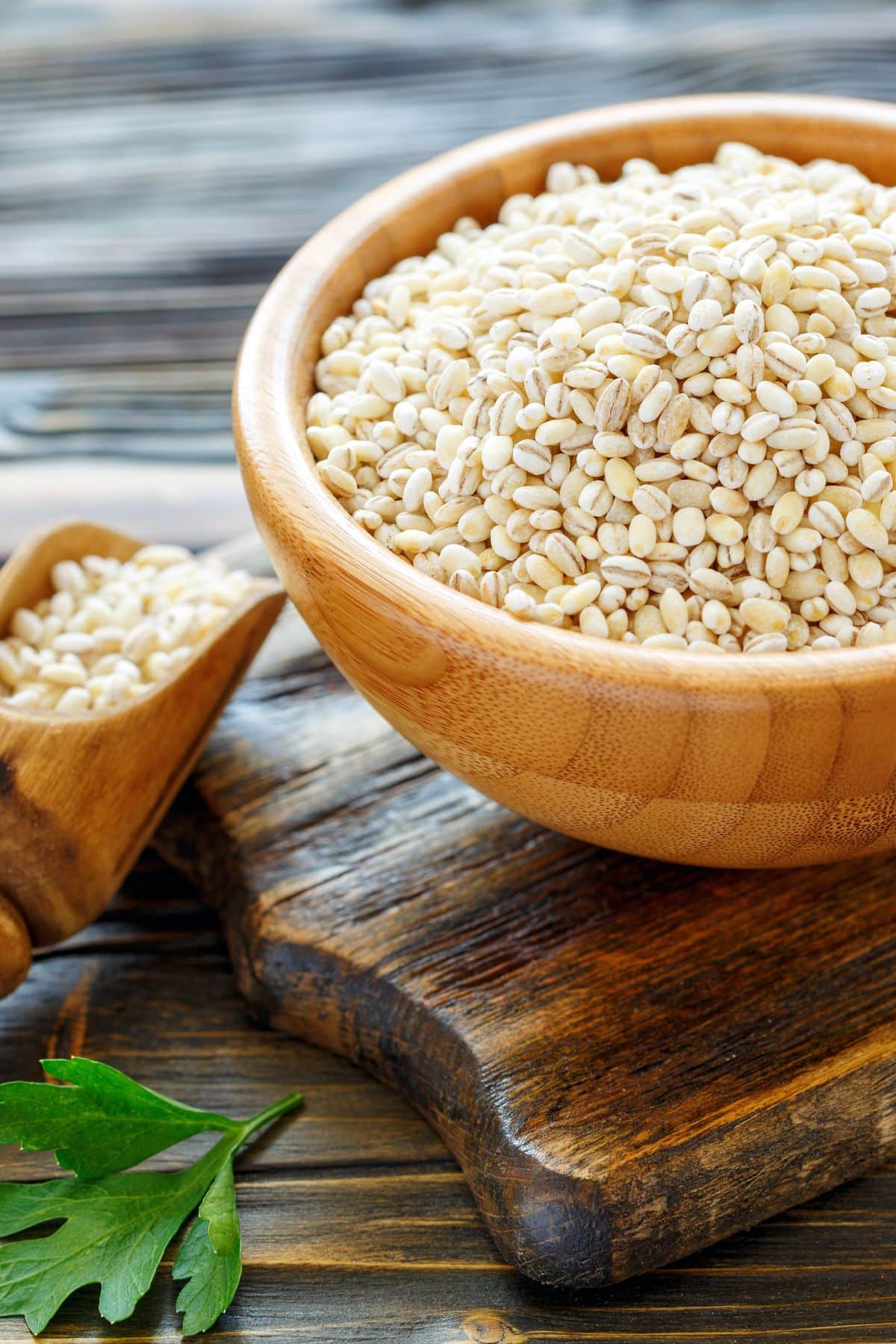
Short grain Pearled barley is a type of grain that is used in many different dishes. It is similar to rice, but it has a slightly different flavor and texture.
Pearled barley has fiber and is a good source of protein. This type of grain is often used in soups and stews, and it can also be used as a side dish or as an ingredient in salads.
Please note that while almost all types of rice are naturally gluten-free, barley does contain gluten. So, barley is not appropriate for gluten-free diets.
To substitute one cup of uncooked arborio rice, use one cup of uncooked pearled barley.
6. Bulgur wheat
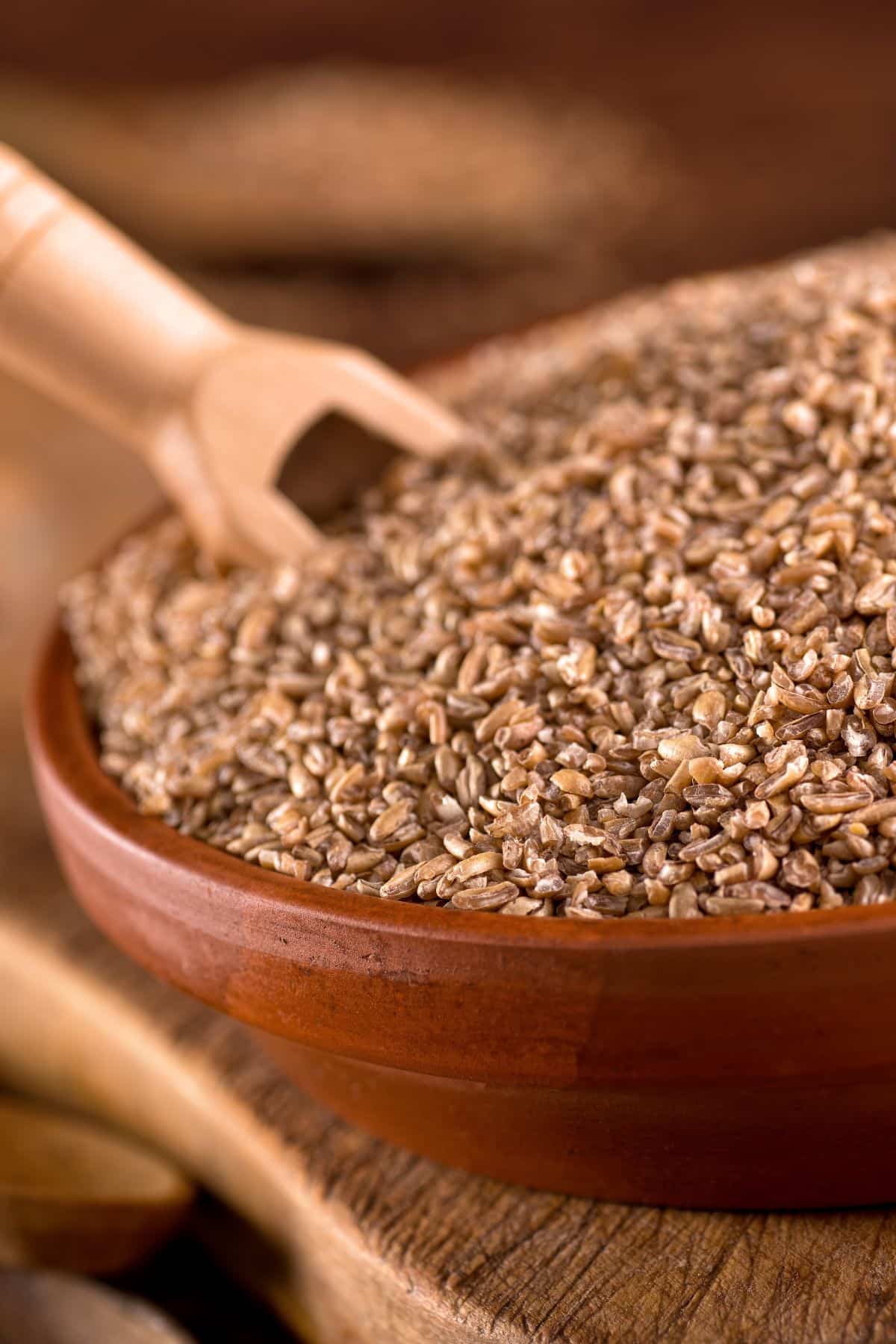
If you’ve ever been to a Mediterranean restaurant, you may have seen bulgur wheat on the menu. But what exactly is it?
Bulgur wheat is a type of whole grain that is made from cracked wheat. It is commonly used in Middle Eastern and Mediterranean cuisine, and it has a nutty flavor and chewy texture. Bulgur wheat is high in fiber and protein, and it can be used in a variety of dishes, from salads to pilafs.
Bulgur wheat is also not appropriate for gluten-free diets.
To substitute one cup of uncooked arborio rice, use one cup of uncooked bulgur wheat.
7. Orzo pasta
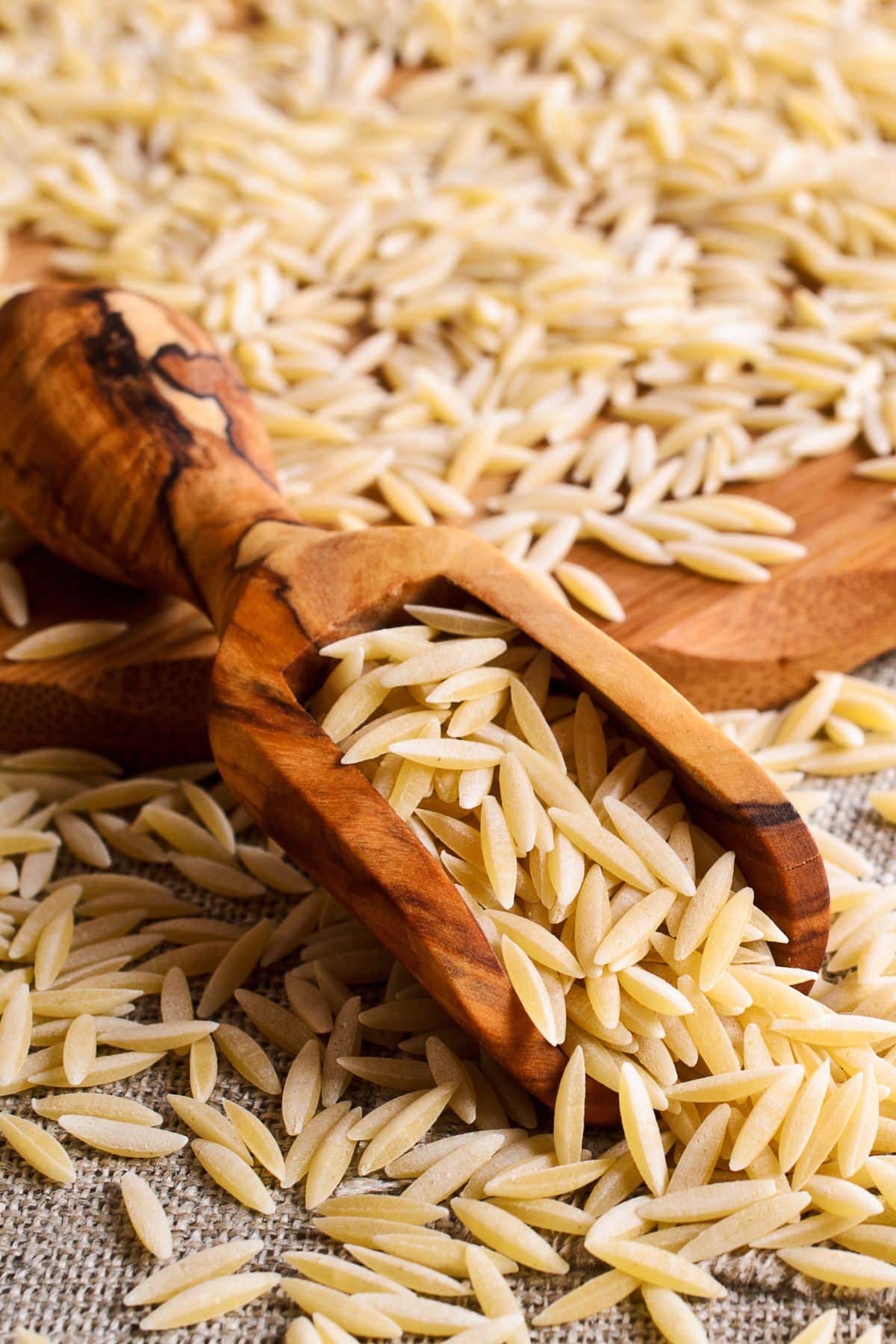
Orzo pasta is a type of Italian pasta that is shaped like a grain of rice. It’s made from semolina, a type of flour made from durum wheat, and it originates from the region of Puglia in southern Italy.
Orzo pasta is commonly used in soups and salads, as well as in main dishes. It can be served hot or cold, and it pairs well with both light and heavy sauces. Because of its unique shape and versatility, Orzo pasta has become a favorite among home cooks and professional chefs alike.
Orzo is not gluten-free, but it does offer a similar texture to that of cooked arborio rice.
To substitute one cup of uncooked arborio rice, use one cup of uncooked orzo pasta.
8. Couscous
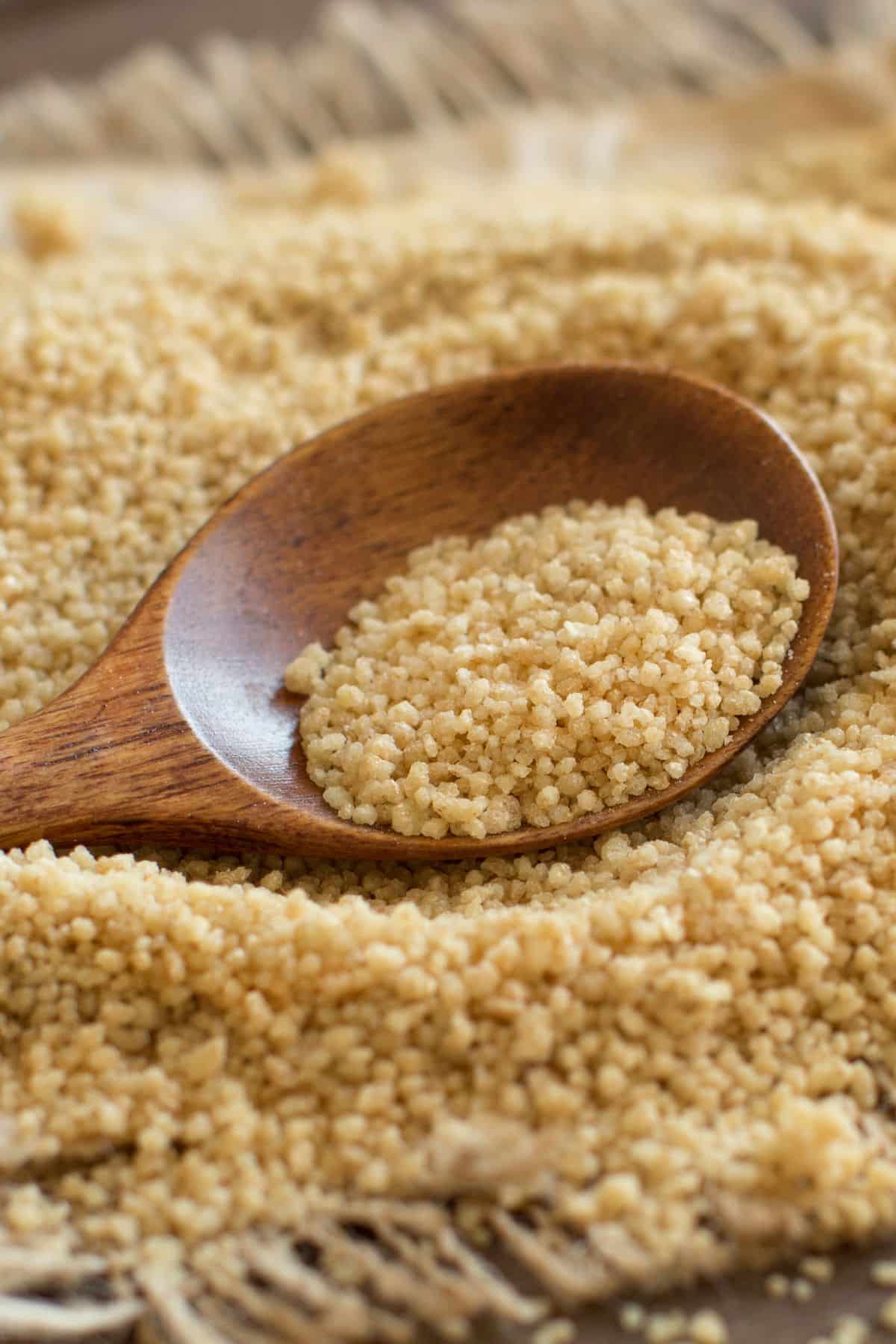
Couscous is a type of pasta that is made from wheat flour. It originated in North Africa, and today it is popular throughout the world.
Couscous can be served plain, or it can be flavored with spices, herbs, or vegetables. It is also a very versatile ingredient-you can find it in dishes ranging from salads to stews.
Couscous is made from wheat so it is not appropriate for gluten-free diets.
To substitute one cup of uncooked arborio rice, use one cup of uncooked couscous.
Pros and Cons Summary
Here’s a chart summarizing various substitutes for Arborio rice, including the respective pros and cons.
| Substitute | Pros | Cons |
|---|---|---|
| Sushi Rice | Sticky texture similar to Arborio, ideal for sushi. | Smaller grains, slightly different flavor. |
| White Basmati Rice | Aromatic, light, and fluffy, good for pilafs and salads. | Less creamy texture than Arborio, not ideal for risotto. |
| Short Grain Brown Rice | Nutrient-rich, retains moisture well. | Texturally different, requires more cooking time. |
| Jasmine Rice | Sweet flavor, slightly sticky, good for Asian dishes. | Less ideal for traditional Italian risotto. |
| Pearled Barley | High in fiber and protein, good in soups and stews. | Contains gluten, not suitable for gluten-free diets. |
| Bulgur Wheat | High in fiber and protein, versatile in various dishes. | Contains gluten, different texture and flavor profile. |
| Orzo Pasta | Similar shape to rice, versatile in soups and salads. | Pasta-based, not gluten-free, absorbs sauce differently. |
| Couscous | Quick cooking, versatile in salads and stews. | Not gluten-free, less creamy than Arborio. |
FAQs
There is not one best substitute, but sushi rice will likely give the most similar texture to arborio rice when making risotto.
My favorite alternative when making paella is long-grain white basmati rice.
More Articles About Substituting Ingredients
Conclusions
There are many substitutes for arborio rice and each of these options has a different texture, flavor, and use. Short grain brown rice, jasmine rice, pearled barley, bulgur wheat, orzo pasta, and couscous are all viable substitutes that can be used in a variety of dishes.
When choosing a substitute, consider the dish you’re making and select the option that will best complement the other ingredients so you can choose the one that best suits your needs.
About the Author: Carrie Forrest has a master’s degree in public health with a specialty in nutrition and is a certified holistic nutritionist. She is a top wellness and food blogger with over 5 million annual visitors to her site. Carrie has an incredible story of recovery from chronic illness and is passionate about helping other women transform their health. Send her a message through her contact form.
Don’t forget to join my newsletter list to get exclusive clean eating recipes and tips. The newsletter is 100% free with no spam; unsubscribe anytime.


